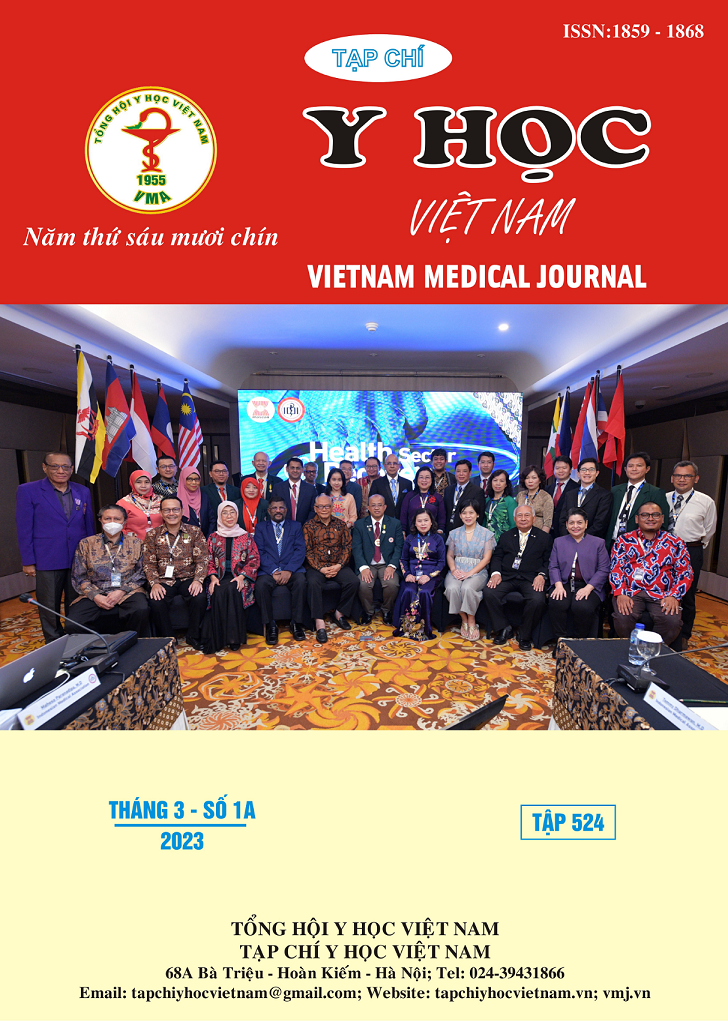CLINICAL CHARATERISTICS AND OUTCOMES OF CONSERVATION RETINOBLASTOMA TUMORS TREATMENT
Main Article Content
Abstract
Purpose: To describe charateristics intra ocular retinoblastoma tumors and outcomes of conservation treatment. Methods: Noncomparative interventional case series 100 tumors in 48 consecutive eyes of 43 patients. were classified according to the ICRB. Results: mean age: 15,7 ± 12,8 months old (youngest was 1 month old). The results of discovery retinoblastoma for conservation treatment were mostly by fundus screening 35/43 patients (81,3%), bilateral retinoblastoma were 38/43 patients. Total 100 tumors in 48 eyes of 43 RB patients with mean 2,3 ± 1,67 tumors /eye (1-7 tumors). Tumor base diameter meand 5,8 ± 5,2mm (1 - 21mm) and thickness mean 3,5 ± 3,4mm (1 - 15mm), the mean follow-up was 14,8 months (range: 6 - 48 months). Mean time of new tumors was 6,6 ± 3,9 months (1- 15 months of follow-up) and mean time of recurrent tumors was 11 months (1-17 months of follow-up). 32/100 tumors had been treated by focal treatment( laser/cryo) and 68/100 tumors with intravenous chemotherapy. Result: tumor base diameter mean decrease 3,41 ± 2,70 mm and thickness mean decrease in 1,97 ± 2,04 mm/u (p <0,01 – paired sample T-test). There were 85/100 tumors regressed with good results 70%, recurrent in 15% and not control in 15%. With time of follow-up, the regression pattern type 2,3 had been transferred to type 1,4. At the end of rasearch, the type 4 had maximum (64%), next type 1(16%), type 2 (3%) and type 3 (2%) (p<0,01). Conclusion: Intraocular retinoblastoma tumors could well treated with focal treatment (laser or cryotherapy) or combine with intravenous chemotherapy. However, the tumors had been regressed by 5 different types, change by time follow-up and most regression patterns are type 1 and 4.
Article Details
Keywords
intraocular retinoblastoma, regression patterns, conservation treatment
References
2. Shields, J.A. and C.L. Shields, Intraocular Tumors: A Text and Atlas. 1992: p. 306-356.
3. Ghassemi, F., et al., Regression patterns in treated retinoblastoma with chemotherapy plus focal adjuvant therapy. Pediatr Blood Cancer, 2013. 60(4): p. 599-604.
4. Shields, C.L., et al., Long-term (20-year) real-world outcomes of intravenous chemotherapy (chemoreduction) for retinoblastoma in 964 eyes of 554 patients at a single centre. Br J Ophthalmol, 2020.
5. Shields, C.L., et al., Retinoblastoma regression patterns following chemoreduction and adjuvant therapy in 557 tumors. Arch Ophthalmol, 2009. 127(3): p. 282-90.
6. Xue, K., et al., [Retinoblastoma regression patterns and results following chemo reduction and adjuvant therapy]. Zhonghua Yan Ke Za Zhi, 2012. 48(7): p. 625-30.
7. Zafar, S.N., S.N. Siddiqui, and N. Zaheer, Tumor Regression Patterns in Retinoblastoma. J Coll Physicians Surg Pak, 2016. 26(11): p. 896-899
8. Palamar M., Thangappan A., and Shields C.L. (2011), Evolution in regression patterns following chemoreduction for retinoblastoma. Arch Ophthalmol, 129(6): p. 727-30.


